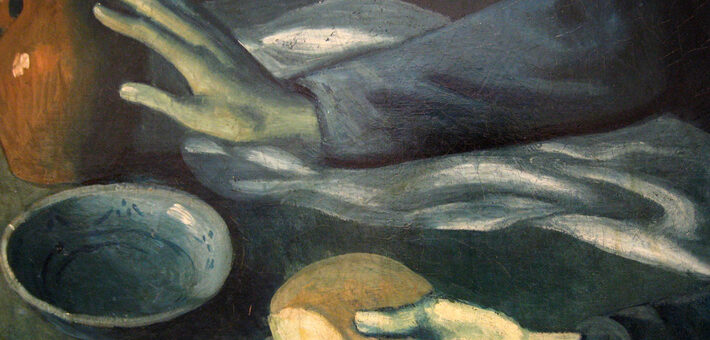Commentary on Hosea 1:2-10
Preaching and teaching from the prophets is already difficult.
The task becomes all the more complicated when the prophets use language and metaphors that conflict with modern sensibilities about gender, marriage, and sexuality.
On the surface, it seems obvious why Hosea would choose marriage imagery to convey the intimate relationship between God and God’s people, as marriage still represents one of the most poignant relationships throughout human culture. When one slows down to read the representation of marriage in this passage of Scripture, however, our current cultural definitions of marriage (in flux as they are) come into direct conflict with the ancient Israelite understanding.
While marriage still represents a covenant, especially in the Christian community, most now view marriage as a relationship into which both parties willingly enter. In the ancient patriarchal world, however, marriage constituted a covenant relationship between two unequal parties. Certainly the male party to the covenant in the ancient world possessed more authority. In this passage, the sole focus is on Hosea’s faithfulness to the covenant and Gomer’s unfaithfulness, reinforcing the misogynistic stereotype of the sympathetic male and a disobedient, unwholesome female.1
The metaphor in Hosea 1:2-10 operates within these unequal characterizations of gender. Because the prophet must take for himself a wife of “whoredom” (NRSV), the power dynamics within the relationship automatically construct an image of a sympathetic, noble male character, who must lower himself to marrying a woman of ill repute, further complicating an already unequal partnership. The term traditionally translated as “whoredom” comes from the Hebrew root znh, which carries connotations of prostitution, but also of general promiscuity, or even simple disobedience and anger.
For example, in the horrific story of the Levite’s concubine in Judges 19, the term for the woman’s anger is the verbal form of znh, although there do not seem to be any sexual exploits involved in her flight from her husband. Znh does not necessarily imply the exchange of goods or capital for sexual service. More likely, it is much closer to the slang English usage of the term “whore,” which can possibly designate a prostitute, but also commonly refers to either a promiscuous person or someone, usually female, who is merely displeasing in some other way.
By asking Hosea to marry such a woman, the text suggests that the woman is inherently base and almost unlovable. Verse 2, then, sets up the elements of the metaphor. Hosea equals God, and Gomer equals Israel. The metaphor requires its ancient audience to sympathize with God as a long-suffering and offended male and condemn Israel as an undesirable and inherently rebellious woman. Although this is a metaphor, it still has the dangerous, and often realized, potential of reinforcing patriarchal understandings of gender.
As if this were not enough of an unpleasant picture, God then commands Hosea to give horrible names to the three children produced by his marriage to Gomer: Jezreel, Lo-ruhammah, and Lo-Ammi. Jezreel’s name in Hebrew means “God sows” and recalls the name “Israel.” The valley of Jezreel also would evoke for Hosea’s audience the violent overthrow of the Israelite king Joram by Jehu, and the gruesome prophecy that the dogs would eat the body of Jezebel, Joram’s mother (another woman the text holds in ill-repute), in the valley of Jezreel (2 Kings 9:6-10).
The second child is a daughter named Lo-ruhammah, which means “no compassion.” There seems to be another wordplay at work here in the root, rechem, whose noun form means “womb.” This symbolic name therefore could signify God’s withholding of compassion from Israel as well as Israel’s own infertility. Finally, Hosea names the third child, Lo-ammi, meaning “not my people.” Within the metaphor, God disowns the chosen people for their sins: “you are not my people, and I am not your God” (verse 9).
This harsh rhetoric was neither lost on the original collectors of the Hosea tradition, nor on the editors of the Revised Common Lectionary. Verse 10 constitutes a radical reversal that offers hope. While Israel will pass through the judgment of God’s rejection, God will ultimately redeem Israel, once more calling them “Children of the living God.” While this probably is a later, post-exilic redaction, verse 10 still draws upon the Hosea tradition to offer a transformative word of hope and ultimate blessing.
This word of hope continues in 1:11 and 2:1 in a passage that portrays God gathering together the people of both the kingdoms of Judah and Israel, who will once again see God’s compassion, be called God’s people, and inhabit their land.
Making the move to the preaching task with this passage is quite problematic. Even with the words of hope at the end of the passage, the preacher and congregation must still wrestle with the metaphor that has dangerous implications for our perceptions of gender and our understanding of God as merciful and compassionate.
I have often heard students and colleagues suggest that preachers and teachers could “flip the metaphor.” In other words, we could speak of God as a spurned wife and Israel as a promiscuous husband. Doing so, however, only holds up a mirror to our sometimes implicit and often explicit residual patriarchy that still tends to forgive male sexual exploits while holding women more accountable. Another way to “manage” this text is to say simply that it was a metaphor that would have communicated clearly to its ancient Israelite audience. What we must do, therefore, is extract the meaning from the metaphor and cast the metaphor aside, like husking an ear of corn. The passage emphasizes, then, God’s ultimate displeasure with God’s people for abandoning their covenant obligations to God and to each other.
While this is certainly a tempting option, current understandings of how metaphors operate suggest that the residual impact of the metaphor cannot be so easily forgotten nor dismissed. In moving from interpretation to proclamation with this text, it may be best to expose the weaknesses of the metaphor and its theology, lest our language somehow implicitly condone patterns of speech that continue to support misogynistic worldviews.


July 28, 2013